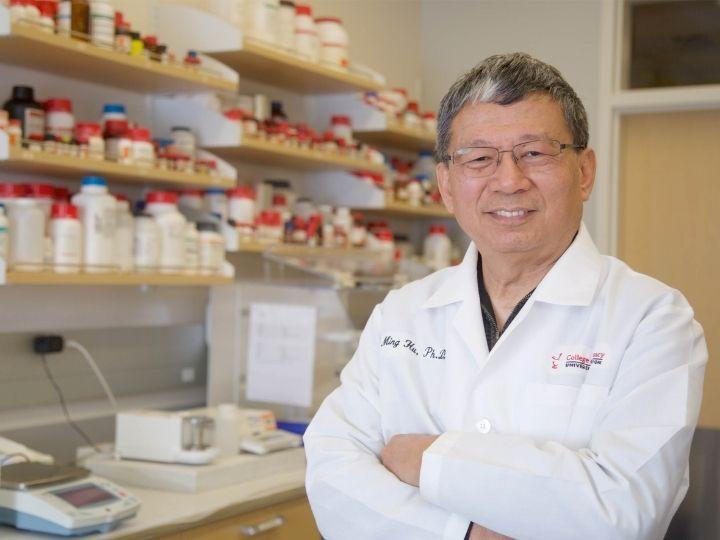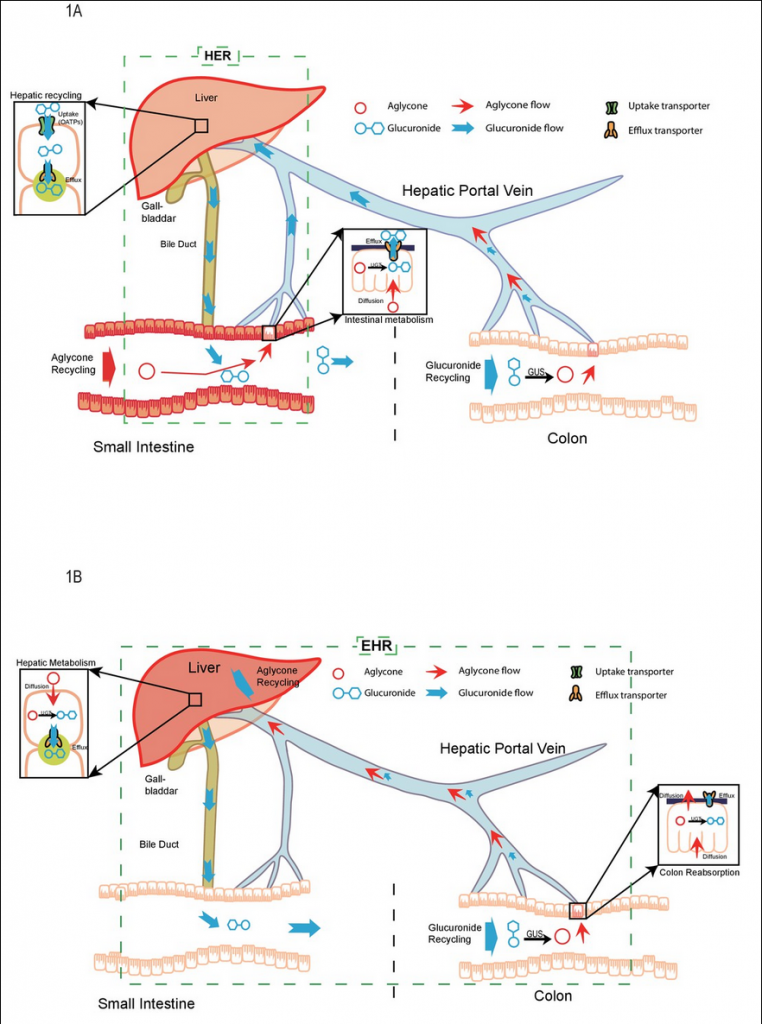The liver is thought of as the critical organ for metabolizing drugs and botanicals. It’s true, however a team of University of Houston pharmaceutical researchers found a newly recognized process of drug metabolism in the intestines, in a mice study. This process is followed by recycling through the liver.
“The liver has long been considered the most important organ for drug metabolism,” said lead author Yifan Tu, who conducted the study while he was doing his doctoral work at the UH College of Pharmacy. “But we’ve shown that the intestines also play a major role in drug metabolism.”
The finding have important implications for understanding how the body metabolizes multiple medications and dietary supplements at the same time, as well as how to develop treatments for intestinal diseases.

“The intestines play a crucial role in metabolizing and recycling certain plant compounds and drugs,” reports Ming Hu Diana S-L. Chow, Endowed Professor of Drug Discovery and Development and the senior author of the paper in eLife.
Scientists have long recognized that bile acid is produced in the liver and released into the intestines and is then recycled back through the liver for reuse as the bile. Some medications that are metabolized in the liver also go through this process, known as enterohepatic recycling (EHR). This can extend the life of drugs in the body, which may affect how well they work and whether they cause side effects.
In their experiments, the team administered 16 different types of flavonoids or drugs directly to the liver or intestines and then tracked what happened to the treatments. They found that some drugs and compounds were metabolized in the intestines and the metabolites were then transported to the liver before being cycled back into the intestines.
“In this process, the liver acts only as a recycling organ, which is rare, since the liver is known to be the metabolic ‘superstar’ organ in humans,” said Tu, who is now a postdoctoral fellow at the pharmaceutical company Boehringer Ingelheim in Connecticut.
The team has called this new mechanism ‘hepatic enteric recycling’ (HER). They found that, in this process, the roles of the liver and intestines are reversed. “This may explain why some drugs or plant compounds have larger effects on the intestine than anticipated and could help scientists understand how intestinal diseases may alter drug metabolism in the body,” said Tu.
Mechanism of Drug Metabolism in the Intestines

(A). HER starts from intestinal glucuronidation of orally dosed aglycones. The glucuronides are taken up into the hepatocytes via portal vein using hepatic uptake transporter OATPs, and then excreted back into bile by apical hepatic efflux transporters, allowing them to return to the small intestine. For biliary glucuronides, the gut microflora β-glucuronides (GUS) will hydrolyze them back into the aglycone form, which are then reabsorbed in colon to complete the recycling. (B) EHR starts from the hepatic metabolism of an aglycone entering liver (from intestinal absorption or blood circulation) into its phase II metabolites (mostly glucuronides). The glucuronides formed in the liver are excreted into bile by the apical hepatic efflux transporters,returned to the small intestine and then moved to colon, where the gut microflora GUS hydrolyze them back into the aglycone form. The aglycone is then re-absorbed from colon and reached the liver again to complete the EHR.
In defining the new disposition process as HER for phenolic drugs, phytochemicals (e.g. flavonoids) as well as their glucuronides, the scientists identified how HER differs significantly from EHR, which is associated with “bile acids and certain drugs, in that intestine is the main metabolite forming organ and liver is the recycling organ.” Whereas, EHR of bile acids and various drugs (Nielsen et al., 2009) is associated with metabolites that are generated in liver and recycled in intestine.
“This new definition for the first-pass metabolism of phenolic drugs and phytochemicals pinpoints where the metabolites are formed and subsequently recycled,” say the scientists. “In other words, the roles of liver and intestine are reversed in the new HER vs the classical EHR.” They say the term ‘Recycling’ refers to the fact that many “extrahepatically generated phenolic glucuronides were able to achieve hepatic recycling in HER.” This is significant because HER biliary excreted glucuronides are not well absorbed in the intestine. They must be reactivated to aglycones, by the microflora β-glucuronidases, before reabsorption can occur (See Figure 1A).”
“We hope our findings will be useful for medicinal chemists to design new drugs tailored to treat intestinal, especially colonic diseases,” said Hu.
In conclusion, they write: “Through the analysis of our study results, a new disposition mechanism called ‘Hepatoenteric Recycling (HER)’ mainly applied to the disposition of drugs and their glucuronides, with significant intestinal metabolism, is proposed. The new mechanism distinguish from the enterohepatic recirculation/recycling, which is mainly applied to compounds which undergo recirculation in intact form or are metabolized by the liver.”





